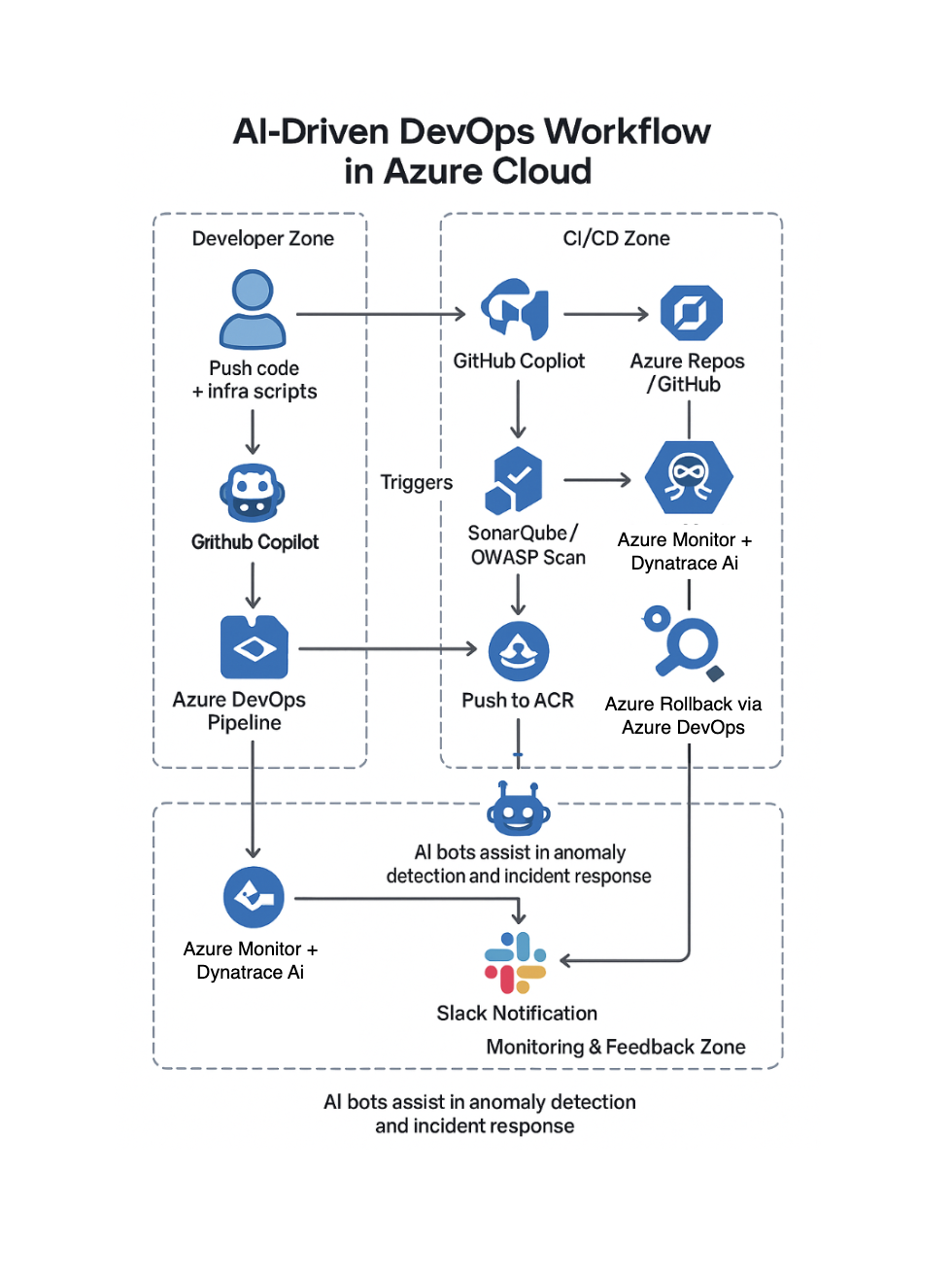AI-Driven DevOps: Revolutionizing Cloud Operations in 2025
The fusion of Artificial Intelligence (AI), Cloud Computing, and DevOps is fundamentally reshaping how modern applications are built, deployed, and maintained. As we step into 2025, AI-driven DevOps is no longer an emerging trend—it’s a strategic imperative for businesses seeking agility, resilience, and scalability in cloud operations.
In this post, we’ll dive into how AI is revolutionizing DevOps practices, what benefits it unlocks in the cloud, and the cutting-edge tools driving this evolution.
The Rise of AI in DevOps
DevOps broke barriers between development and operations, introducing automation and continuous delivery. But as infrastructure grows more dynamic and distributed, traditional automation alone can’t keep up.
That’s where AI-enhanced DevOps steps in—adding intelligence and adaptability to the DevOps lifecycle. Here’s how:
1. Automating Repetitive Tasks
What it does: AI handles routine operations like code analysis, testing, and deployment orchestration—minimizing human error and boosting developer productivity.
Example:
- GitHub Copilot offers real-time code suggestions and refactoring.
- AWS CodeGuru reviews code for inefficiencies and potential security issues, reducing technical debt before deployment.
2. Predictive Analytics
What it does: AI models mine telemetry and historical logs to forecast risks—like performance bottlenecks, outages, or capacity breaches.
Example:
- Azure Monitor with Log Analytics can predict database saturation 36 hours in advance and trigger an autoscaling alert.
3. Intelligent Monitoring
What it does: Machine learning detects anomalies in real-time, without relying on static thresholds.
Example:
- Dynatrace Davis AI identifies abnormal spikes in user traffic or memory leaks in containers and performs automated root cause analysis—cutting MTTR dramatically.
4. Self-Healing Infrastructure
What it does: AI agents can auto-remediate infrastructure issues—restarting pods, scaling resources, or reverting failed deployments without manual intervention.
Example:
- K8sGPT and CastAI enable auto-healing in Kubernetes by detecting OOM kills, adjusting CPU/memory limits, and triggering rollback workflows when needed.
AI-Driven DevOps in Cloud Operations
The cloud’s elasticity and rich telemetry make it the ideal playground for AI innovations.

1. Smarter Resource Optimization
AI dynamically analyzes CPU, memory, and network data to scale workloads and reduce cloud spend.
Example:
- Azure Advisor and CastAI provide real-time recommendations to resize underutilized resources.
2. Proactive Security
AI identifies anomalies in user behavior, access logs, and config changes to detect insider threats or breaches.
Example:
- Microsoft Defender for Cloud uses AI to flag suspicious sign-ins, lateral movement, and privilege escalation attempts.
3. Next-Gen CI/CD
AI-enhanced pipelines improve delivery speed and quality by spotting pipeline inefficiencies and testing gaps.
Example:
- GitHub Copilot, AWS CodeWhisperer, and Azure DevOps IntelliSense accelerate code validation and reduce bugs.
4. Faster Incident Response
AI streamlines incident triage with automatic correlation, root cause detection, and remediation suggestions.
Example:
- PagerDuty’s Event Intelligence clusters alerts, eliminates noise, and routes incidents to the right team with AI-based prioritization.
Key Tools & Technologies
Here are some standout tools powering AI-augmented DevOps:
-
Kubernetes + AI:
- KubeFlow, K8sGPT, and CastAI enable intelligent orchestration, scaling, and ML model deployment in Kubernetes.
-
AI-Powered Observability:
- Datadog, New Relic, and Dynatrace offer real-time dashboards and predictive alerts powered by AI.
-
ChatOps with AI Bots:
- Tools like Slack, Microsoft Teams, and Mattermost integrate AI bots to automate workflows and enable voice-command deployments.
-
MLOps Frameworks:
- MLflow, Kubeflow Pipelines, and TFX bridge the gap between machine learning models and production-grade DevOps pipelines.
What’s Next for AI in DevOps?
Looking ahead, AI will become even more embedded in the DevOps toolchain:
-
Autonomous DevOps
Pipelines that automatically detect changes, test, deploy, and self-correct with zero-touch delivery (e.g., Harness CI/CD optimization). -
AI-Enhanced Collaboration
AI copilots will suggest meeting times, summarize pull request discussions, and offer team productivity insights. -
Explainable AI (XAI)
Enterprise DevOps teams will demand transparency with tools like IBM AI Explainability 360 to audit AI decisions in change approval processes. -
Edge-Integrated DevOps
AI will extend to edge devices for real-time local analytics and reduced cloud latency (e.g., AWS Greengrass and Azure IoT Edge).
Conclusion
AI-driven DevOps isn’t just a buzzword—it’s the future of modern software delivery. With smart automation, predictive insight, and self-healing capabilities, AI is helping teams move faster, operate smarter, and build more resilient cloud systems.
As 2025 unfolds, organizations embracing this shift will lead the pack in innovation, stability, and customer experience.
💬 What AI-DevOps tools are you using in 2025? Share your thoughts and experiences in the comments—we’d love to learn from your journey!
Tags: #AI #Cloud #DevOps #Automation #MachineLearning #CloudComputing #TechTrends2025